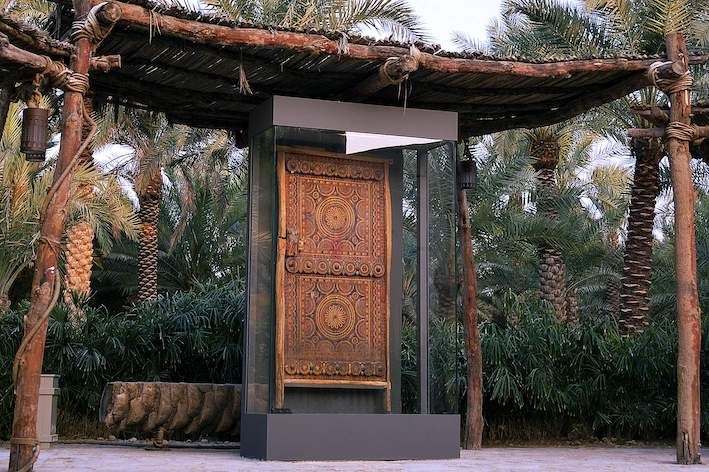When One Closes, Another Opens
Traditional doors from the 'Home,' collection of the artist Abdul Qader Al Rais.
Whether traditional or modern, large or small, sturdy or flimsy, a door can be a simple, plain object with no distinctions or one that highlights your identity with many personalized decorations.
The front door can also capture elements of your history, the story of your home and the country you are from, and even what you may be celebrating currently; a birthday, a graduation, or even a religious holiday.
In this special edition of Ithraeyat, we pay homage to ‘doors’, as over the four years of this publication, which was born in COVID-19 when all doors were closed in lockdowns, the magazine helped open doors of possibilities for creatives, artists, and writers — building new bridges of cross-cultural dialogue, art, and inspirational storytelling.
In this edition, we reflect on the philosophical meaning of doors and the various artists who found inspiration in these gates to various pathways, such as the godfather of Emirati art, Abdul Qader Al Rais, whose colorful nostalgic art graces our cover for its 23rd edition. When one door opens, it can open many other doors.
We meet Timothy Verdon, Director of Museo dell'Opera del Duomo in Florence, Italy, and discover one of the world’s oldest doors, ‘The Gates of Paradise,’ which are said to have been bestowed their title by one of history’s greatest artists, the legendary Michelangelo, who said: “They’re so beautiful they would grace the entrance to paradise.”
Like the many colors found in nature, we feature colorful unique voices, from important cultural figures to artists and photographers, as well as writers and poets, each sharing their creations and stories with us to reflect on, and inspire us to think outside the typical door.
In an earlier age, before streets had names and buildings had numbers, the front door was the best way to identify someone's home. Each one had its own marks and designs. Some were floral or geometric, while others had heart-shaped figures or traditional items such as a coffee pot or dallah. One popular design that owes its origins to local traditions is a circle carved within a rhomboid geometric shape, known as the "Ain Al Hasoud" (eye of envy), which is said to offer protection against the evil eye.
Doors were often smaller than those of today, said to force people to ‘bend in humility’ when entering a home. Some mosques and schools had smaller doors for this very same reason.
Pause for a moment and look at the door to your home. What does it represent? Does it have a distinct feature to set it apart from others?
We thank you for joining us on this journey of pathways of possibilities, and we hope it opens doors for you and inspires you to open doors for others.
We hope you enjoy this latest ‘makhzan’— storehouse — of enriching and unique stories


